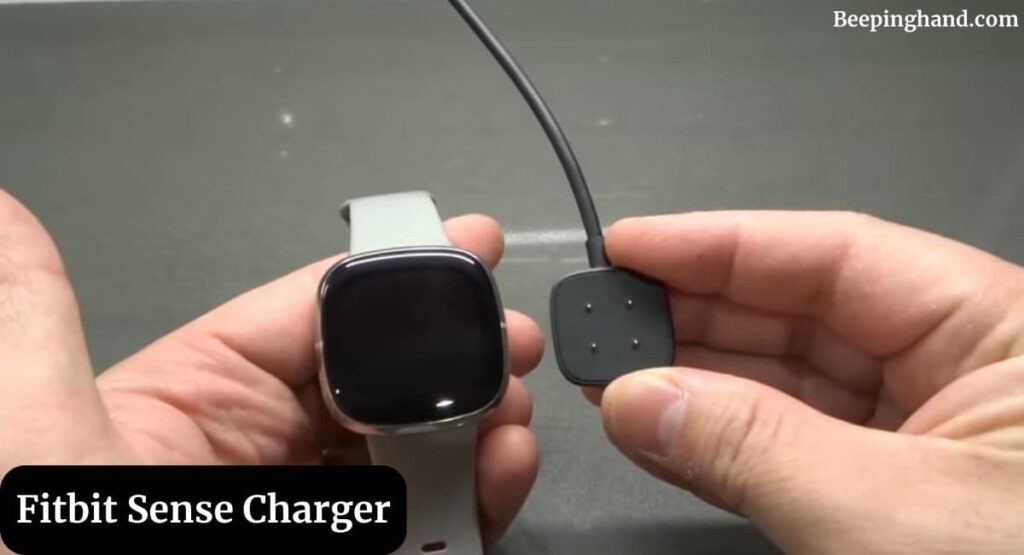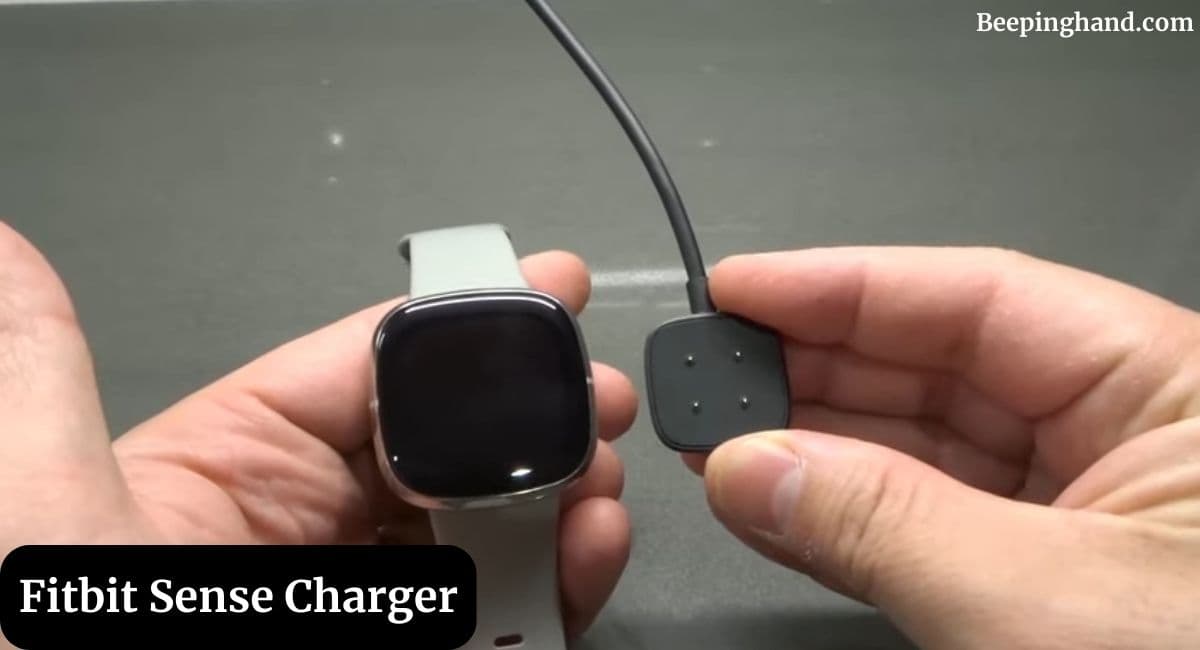Fitness enthusiasts have embraced wearable technology to track their health and wellness. Fitbit Sense stands as a prominent smartwatch, offering an array of features to monitor your well-being.
However, to keep Fitbit Sense running smoothly, understanding how to efficiently charge it is essential.
This article will guide you to Fitbit Sense Charger, sharing about different types, best practices, and common issues users might face. So, keep reading.
Fitbit Sense Charger

If you are really interested to know about the different types of chargers, ways to charge, and tips for properly charging your Fitbit Sense then you have come to the right place.
What is Fitbit Sense Charger?
The Fitbit Sense charger is the lifeline of this advanced smartwatch. It supplies the necessary power to keep the device functioning optimally. Understanding the various charging options available for Fitbit Sense ensures that your fitness companion never runs out of battery when you need it the most.
Types of Fitbit Sense Chargers
- Magnetic Charging Cable – The magnetic charging cable is the standard option that comes with Fitbit Sense. It effortlessly attaches to the watch’s back, providing a reliable and secure connection.
- Docking Station Charger – The docking station charger offers a more stable platform for charging. It usually comes with a built-in stand, making it ideal for use on your bedside table or desk.
- Portable Power Bank Charger – For users on the go, a portable power bank charger ensures that your Fitbit Sense remains powered up during travel or outdoor adventures.
- Wireless Charging Pad – Wireless charging pads offer a tangle-free charging experience. Simply place your Fitbit Sense on the pad, and charging begins.
How to Charge Fitbit Sense?
Charging your Fitbit Sense is a straightforward process.
Follow these steps for efficient charging –
- Ensure the charger is connected to a power source.
- Attach the charging cable to the back of your Fitbit Sense, aligning the magnets.
- The charging indicator on the watch should light up, confirming the charging process has begun.
Tips for Proper Charging
Proper charging habits can prolong your Fitbit Sense’s battery life and ensure seamless performance.
Consider the following tips –
- Battery Maintenance – Occasionally, allow your Fitbit Sense to fully discharge and then recharge it to maintain battery health.
- Charging Frequency – Charge your device when the battery level drops to around 20% to 30% to avoid deep discharges.
- Avoid Overcharging – Overcharging can degrade battery life over time. Unplug the charger once your Fitbit Sense is fully charged.
Common Charging Issues and Solutions
Despite the efficiency of Fitbit Sense chargers, users may encounter some charging-related problems.
Here are common issues and their solutions –
- Charging Not Starting – Ensure the charging connectors and ports are clean and free from debris. Restarting the device can also resolve the issue.
- Slow Charging – Use the original charging cable and adapter provided by Fitbit for optimal charging speed.
- Overheating during Charging – Avoid charging your Fitbit Sense in extreme temperatures or direct sunlight to prevent overheating.
Why Original Chargers Matter?
Using original Fitbit Sense chargers is crucial to maintain the integrity of your device. Third-party chargers might not offer the same safety features, leading to potential damage to your smartwatch.
How to Choose the Right Charger for Fitbit Sense?
Selecting the right charger ensures your Fitbit Sense’s longevity and safety.
Consider the following factors when choosing a charger:
- Compatibility – Check that the charger is specifically designed for Fitbit Sense.
- Safety Features – Look for chargers with overcharge protection and short circuit prevention.
- Reviews and Ratings – Read user reviews and ratings to gauge the charger’s performance and reliability.
How to Extend Fitbit Sense Battery Life?
Prolonging your Fitbit Sense battery life can be achieved through simple power-saving practices –
- Power-Saving Tips – Adjust your device settings to minimize battery consumption.
- Disabling Unused Features – Turn off unnecessary features when not in use to conserve power.
Wrapping Up
This article is all about Fitbit Sense Charger. Knowing how to properly charge your Fitbit Sense is crucial for an uninterrupted fitness tracking experience. Using the right charger, maintaining battery health, and understanding common issues will ensure your Fitbit Sense remains your reliable fitness companion.
Embrace sustainable charging practices to reduce e-waste and contribute to a greener future. Remember, taking care of your Fitbit Sense will reward you with an enduring and enjoyable fitness journey.
I hope this article was helpful to you and if you still find any queries then you may ask in the comment box. For more information visit the Help and Support Page.
FAQ’s Fitbit Sense Charger
Can I use my phone charger to charge Fitbit Sense?
While some phone chargers might work, it’s best to use the original Fitbit charger for optimal performance and safety.
How long does it take to fully charge Fitbit Sense?
On average, it takes about two hours to fully charge Fitbit Sense from a depleted battery.
Can I wear my Fitbit Sense while it’s charging?
Yes, you can wear your Fitbit Sense while it’s charging. But, this is not a good practice.
Is it safe to charge Fitbit Sense overnight?
Yes, Fitbit Sense is equipped with safety features that prevent overcharging.
What should I do if my Fitbit Sense doesn’t charge?
Check the charging connectors and ports for debris, and try restarting the device.
